Archive for 2009
Monday, November 23rd, 2009
Q:
Hello Dr. Mohebi,
It’s my sixth day after I got my hair transplant in Los Angeles and all seems to be healing and on track. The other day, when I was shampooing, I noticed some follicles. Maybe about six of them. Is this something to be concerned about?
What I’m pressing about is the staples area of my head. It doesn’t look infected or have a lot of inflammation, but it is really sensitive, meaning that I feel pain each time I hit that area of my head on something or just swipe my head past a car head cushion. Also, with not much shock, the pain level has increased as I’ve taken less anti-inflammatory drugs. Are there any over the counter pills you’d recommend. Whether topical or oral drugs, it doesn’t matter to me.
All I know is, I’m really stoked about getting these staples removed in a few months! Can’t wait until they’re off.
Thanks,
A:
Dear Joe,
After a period of time, the closed donor wound sensitivity to pain and its tenderness will decrease. But after a few days, the patient might feel some pain in the donor area while on medication. If the case happens to be that the transplant donor area is becoming more sensitive, pay me a visit and I’ll take a look at your donor area to make sure its healing properly.
Yours truly,
Tags: Anti-Inflammatory, Donor Wound, Follicles, Healing, Inflammation, Pain Killers
Posted in California hair transplant, hair transplant, men hair restoration, Orange County hair transplant | No Comments »
Thursday, November 19th, 2009

Q:
Not too long ago, I had a hair transplant (using FUE). Things were OK until several months after the transplant. I spent some time having fun in the sun, and it was maybe close to triple digit degrees outdoors. As soon as I got back to my house, I noticed my scalp in the transplanted area had turned white. It looked like the skin on my head had been scorched. But I didn’t think it was a big deal and I kept on using the Minoxidil with Betaderm spray, which my doctor highly recommended.
A few weeks later, the top of my head (which had been grafted) began to peel and the skin fell off (like a sun burn). And there were a few transplanted hairs which fell off as well, with the skin. This really alarmed me. After about eight weeks, the scalp seems to have healed, although there is some redness in places; but, overall, it seems to be OK. But, I’m a bit worried about the condition of my after-playing-in-the-sun scalp. I know it was probably a sun burn, but I just hope my grafts weren’t damaged beyond repair. I’ve done some research on skin consequences of sun burn, but I wonder if the grafts can ever fully recover from the exposure to the ultra-violet rays. I know if my skin becomes more tan, it’s OK. But about my grafts, I’m really concerned about them.
I need answers, doc.
Yours truly,
A beach bum with a hair transplant
A:
Hey beach bum,
Skin and scalp which has been exposed to the sun’s rays for long periods of time damage both native hairs and transplanted hair. The consequences can be especially harmful if a person who has had a hair transplanted is not under an umbrella or is not wearing a hat of some sort. The scalp skin could be damaged that way. It is best to stay out of the sun after a few minutes, at most. For the first six months, hair transplant patients may want to use sunscreen or wear a hat to prevent hair loss and to guard against permanent damage to hair follicles.
For those who don’t like to wear hats or other types of protective head wear ought to guard their hair as if their financial stability depended on it. Make sure your hair density increases to the point in which your hair follicles cover your entire scalp and so the scalp skin is not exposed to the sun’s scorching rays (especially during summer).
I can’t give you a verdict on whether your newly transplanted hair is permanently damaged. I’m sure I don’t have to tell you this, but I’ll say it anyway in case there are people reading this blog who are in a similar situation: from now on, be very careful about your scalp’s sun exposure. And just kick-back and wait a while to see if the damaged hair grows back.
Remember, after hair transplant care is very important, if not crucial to the longevity of your hair restoration results.
Tags: after hair transplant, complications, fue, hair loss, hair transplant surgery, men hair loss, sun exposure
Posted in Bakersfield hair transplant, California hair transplant, hair transplant, men hair restoration, Newport Beach hair transplant, Orange County hair transplant | No Comments »
Monday, November 16th, 2009

Q:
Hey Doc:
My hair is as thin as the state of economy; I’m trying to figure out how to make it stronger. Two products I tried are, Chronostin, suggested by my barber; the other one was recommended to me by my psychiatrist: it’s called Minoxidil, Estradiol Vateral, Esopropyl Acohol.
I’d like to hear your expert advice on these products, doc?
Yours truly,
A:
I commend you for seeing a skin doctor. As part of your dermatologist’s diagnosis, I’m quite certain he took a look at you to see if there was miniaturization of hair leading to hair loss in men. Let me add that combining minoxidil with other hormonal medications hasn’t been proven to be a solution to hair loss. You were probably diagnosed with male pattern baldness and then the doctor decided to recommend it. Since that’s what happened, you might also want to try finasteride, a medication much more powerful compared to Minoxidil, based on a few research publications.
The other product, Chronostim, I don’t know what that is. But, being the dedicated doctor I am, I did some of my own research on it. Chronostim is a product that says it is able to act on a group of factors playing a part in hair loss. It has both morning and nighttime treatments.
It contains sabal enriched lauric acid (seborrhea regulating ), tocopherol Nicotinate (microcirculation stimulating, oxygenating bulbar), glycyrrhetinic Acide bta (reinforces the activity of 5-alpha ductase), excipient alcohol-silicone, perfumed- hypoallergenic.
Chronostim, called NIGHT, contains a semblance of Ruscus, enriched in Neoruscine (stimulating of the VEGF), Diguanosine traphosphate (GP4G – cellular stimulant), Piroctonolamine (cleansing, anti-irritant), excipient hydro-alcoholic, perfumed-hypoallergenic.
Clear as the Los Angeles smog, right? To give it to you straight, these products haven’t been proven in any way whatsoever to aid in the treatment of men’s hair loss.
May I be so bold to say, if I were in your shoes, I’d continue taking finasteride (Propecia), if your dermatologist is okay with it. However, if you continue to experience hair loss, a hair transplant would be the best answer.
Best,
Dr. Mohebi
Tags: chronostim, Chronostin, dermatologist, estradiol vateral, finasteride, hair loss product, male pattern hair loss, minoxidil, Propeica, skin doctor
Posted in hair loss medication, hair loss products, hair transplant, men hair restoration | No Comments »
Saturday, November 14th, 2009

In the latest issue of the Journal of Internal Medicine, a new research study was published: “A Rare Complication: New Hair Growth Around Healing Wounds.” This study is related to Dr. Mohebi’s personal research at Johns Hopkins Medical Institute on gene therapy techniques and wound healing and how it affected the growth of mice hair.
The journal study was about a person who had hair growth surrounding a healing wound at Guangxi Medical University in Nanning, China.
The doctors involved in the study mention an incident in which hair growth occurred around a wound during the process of wound healing. Hair growth after wound healing is an atypical occurrence. This is the first time such an event had ever been recorded in scientific literature.
The doctors concluded that the wounds damaged the hair follicles and epidermis, but that it was possible for both to repair themselves if there was a suitable physical and chemical micro-environment. The doctors say that this new hypothesis may very well lead to new methods of managing hair loss, tissue engineering, and the regeneration of other organs.
At the laboratory of Johns Hopkins Medical Institute, and as part of my overall research, I did a major investigative study on hair growth as a byproduct of wound healing. On a few rats, after witnessing wound healing, to my delight, I found that some gene therapy techniques stimulated the hair growth.
My attention was on hair growth only and, coincidentally, our results matched other hair growth-wound healing studies, during 2005 to 2006. At the University of Pennsylvania, Dr. Cotsarelis, along with his contemporaries, first made public a study on the relationship between wound healing and hair growth through activation of the molecular pathway WNT.
Other similar studies have called attention to the fact that hair restoration through tissue engineering, hair multiplication, and gene therapy might one day happen and that we just may have a breakthrough a lot sooner than we expected all these years.
Parsa Mohebi, M.D.
Medical Director
US Hair Transplant
Tags: gene therapy, hair growth, hair loss, hair restoration, wound healing
Posted in California hair transplant, hair transplant, men hair restoration, women hair loss | No Comments »
Thursday, November 12th, 2009
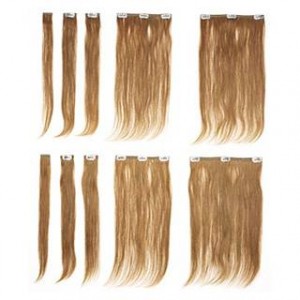 There was an article I came across about artificial hair transplantation. The practice of artificial hair or synthetic hair transplantation to treat hair loss or androgenetic alopecia has yet to be approved by the FDA. But, in other countries, artificial hair restoration is being attempted. In addition, in the Journal of Cosmetic Dermatology, there was a study published about artificial hair transplants, but the results are to be taken with a grain of salt as there weren’t a lot of participants. Nevertheless, it’s worth mentioning. There was an article I came across about artificial hair transplantation. The practice of artificial hair or synthetic hair transplantation to treat hair loss or androgenetic alopecia has yet to be approved by the FDA. But, in other countries, artificial hair restoration is being attempted. In addition, in the Journal of Cosmetic Dermatology, there was a study published about artificial hair transplants, but the results are to be taken with a grain of salt as there weren’t a lot of participants. Nevertheless, it’s worth mentioning.
Mentioned in the article were issues in the artificial hair implant process, which included: ineffective techniques, poor quality of hair fiber, and inexperienced surgeons. But, it’s important to note, the study’s aim is to convey the idea that artificial copolyamide fiber implantation seems to be relatively safe and a possible remedy to male pattern baldness or androgenetic alopecia.
The study consisted of 10 androgenetic alopecia adult test subjects who had tried more mainstream hair restoration techniques but to no avail; these test subjects agreed to have copolyamide fiber implanted on their scalps and were followed a minimum of three years. Initial implants included 100 fibers followed by subsequent sessions of up to 500 fibers per four to six weeks for the purpose of achieving a density of 20-40 fibers per cm2.
Throughout the study, during fiber implants and follow-up sessions, the researchers maintained an almost exact adherence to schedule. For the study as a whole, 10,000 fibers were implanted; for each test subject, an average of 1000 fibers. Overall (except for one person), researchers found that the implants resulted in pleasant-looking hair, didn’t have any notable side effects, and the subjects emotionally satisfied. At the entry point of most fibers, sebum deposition and temporary pitting were consistent throughout. In 30 percent of test subjects, there was a case of recurrent mild folliculitis.
In this study, common complications such as facial swelling, cellulitis, and severe scarring were not detected. It is important to note, each year, 15 percent to 30 percent of transplanted fibers fell away, which led to required regular maintenance. To conclude the study, factors of significant importance were the method of fiber transplant technique and consistent follow-up, leading to positive results. In the near future, hair transplants might be done with artificial hair for patients who don’t have quality donor hair and also are suffering from excessive baldness. But, much more testing is required to see whether artificial hair transplant can be an option for future hair loss patients.
Tags: androgenetic alopecia, artificial hair, Artificial hair implantation, cellulitis, copolyamide, FDA approval, fiber implantation, folliculitis, male pattern baldness, synthetic hair
Posted in hair transplant, men hair restoration, women hair loss | No Comments »
Tuesday, November 10th, 2009
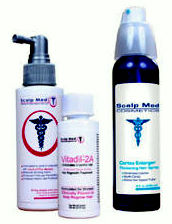 Q: Q:
Dear Parsa Mohebi,
I hope you’re doing great. I hope you also remember me – it’s —-. I visited your office in January in Mission Viejo, California. I am currently in Dubai! Thank you for the letter which you sent me regarding the tests I should take. I appreciate the time you took out for me. I have taken the tests and wait for the results.
I wanted to ask you a question regarding the hair growth. Recently I was going through some websites and landed on a product called ScalpMed. I was quite alarmed at how this product worked (as it says it does). I am aware that there are numerous type of products available in the market but for some reason this really got me interested. Can you please have a look at it and advice me whether or not to take it seriously?
I appreciate for your time. Looking forward to hear from you!
A:
The hair loss treatment industry is a multi-million dollar business. As such, there are usually companies offering much cheaper, short-cut type products which claim to have the same benefits as more mainstream hair restoration methods.
“I’ve tried hair loss products, but it didn’t work. I don’t think I’ll try it again.”
Most likely, that’s not a line you’ll hear in a commercial for a hair loss product on late night television. But that’s what I think of most of these infomerical-type hair loss treatment goods.
Given the high demand, hair loss products are numerous, but not always effective.
If patients ask me about hair loss products, I like to post them on this blog, as I’m sure there are a lot of people interested in reading about it. Scalp Med is a company which makes numerous products on hair thickening and hair loss treatment. Scalp Med likes to assemble different types of kits for their prospective customers, including a Detoxifying Cleanser Kit, Scalp Med for Women, and Mega-Multi Vitamins.
Like other companies in the hair loss industry, Scalp Med’s advertisements go as far as to say that they are FDA-approved. Any Joe Schmo can find photographs, legit testimonies, and other types of “proof” from balding clients who try to promote Scalp Med’s product.
There are various types of Scalp Med product, including topical Vitadil-5A for men, Vitadil-2A for women, topical NutriSol-RM, and Cortex Enlarger hair thickening spray. The first two Vitadils are topical solutions which contain minoxidil (also Rogaine’s key component). The claim Scalp Med makes is that they have formulated a unique delivery agent which is supposed to increase the absorption of minoxidil in women and men.
For the Scalp Med products NutriSol-RM and Cortex Enlarger thickening spray, we are sort of left in the dark about what exactly is contained in them. Except for minoxidil, the other ingredients contained in these products haven’t been proven to aid in the growth of hair and the health of hair. It’s important to note, the cleansing agents contained in a lot of these types of products do nothing to help a person grow their hair. No matter how clean hair is, it doesn’t help it to grow. Don’t believe the advertising.
I strongly urge you to find out whether your hair loss is treatable. It may stem from some other health condition instead of it being hereditary. If you’re a woman, and you know you have a typical type of female patterned hair baldness, then Rogaine may help.
Sincerely,
Dr. Mohebi
Tags: hair cleanser, hair loss product, hair volumizer, minoxidil, rogaine, Scalp Med, ScalpMed
Posted in California hair transplant, hair loss medication, hair loss products, men hair restoration, women hair loss | No Comments »
Friday, October 30th, 2009

The field of hair growth and hair restoration has introduced a new player to its lineup: TRH (Thyrotropin-Releasing Hormone). It is likely TRH may turn out to be a heavy hitter in the fast-growing hair transplant industry.
Just recently, a new finding in hair elongation and the hair growth cycle was published in the Journal of the Federation of American Societies for Experimental Biology (The FASEB Journal). The research was conducted in Germany by Dr. Gaspar at the top-ranked University of L’beck, Department of Dermatology and Department of Internal Medicine.
It’s been shown that Thyrotropin-Releasing Hormone (TRH) is one of the crucial elements involved in the hair follicle growth cycle. Thyrotropin-Releasing Hormone is very closely situated to the hypothalamic-pituitary-thyroid axis. This axis stabilizes thyroid hormone synthesis.
Scientists have decided to study whether human hair follicle functions are also modulated by thyrotropin-releasing hormone, because it’s been found in human tissue. According to their findings, the researchers say that the epithelium of human scalp hair follicles expresses not only TRH receptors (TRH-R), but also TRH itself at the protein and gene level.
They found stimulation of organ-cultured hair growth with thyrotropin-releasing hormone stimulates hair follicle elongation, prolongs the hair growth cycle phase (anagen), and antagonizes its termination by TGF-beta2. It also increases proliferation and inhibits the apoptosis of hair matrix keratinocytes.
So, we can conclude from the study that thyrotropin-releasing hormone operates as a legitimate potent hair-growth stimulator. It’s proven to be an ideal discovery tool for identifying functions of thyrotropin-releasing hormone are hair follicles.
Tags: hair growth, hair growth stimulator, hair restoration, Thyrotropin-Releasing Hormone, TRH
Posted in hair loss medication, men hair restoration | No Comments »
Thursday, October 22nd, 2009
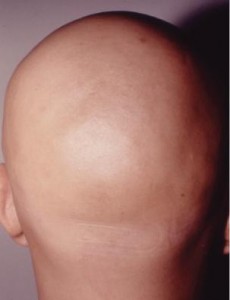 Q: Q:
I am a 26-year-old woman.Not too long ago, I felt as if I owned the world. Then I got alopecia totalis, and now I’d rather hide, so I understand what it feels like to be a freak. But, remember, we have nothing to be ashamed about. This condition is more widespread than we think and people are more understanding than we give them credit for. People like us can live normal, happy lives, although maybe we may stand out in a crowd. Since I acquired alopecia totalis, lots of my people have told me they know someone with my disease. There are more people than we know who have alopecia totalis, like NBA player Charlie Villanueva. Although we don’t look exactly like other people, if we learn to overcome our own self-doubts we can be phenomenally successful people.
I’m a female. And it is my deepest desire to show the world, and especially other women suffering form alopecia totalis, that I can live with self-respect and high self-regard. I want to make it one of my goals to inspire young girls with alopecia totalis and help them to achieve their dreams.
I’m still in my twenties and I know I haven’t experienced the more serious consequences of alopecia totalis. I’m determined to maintain a positive outlook and I believe I will even later on in life. There’s a lot more to a human being than their hair style. In fact, maybe having alopecia totalis will help us focus more on our character and integrity than superficial appearances. If I had the choice of being bald and fit, or with a full head of hair and obese, I choose the former. I want to be a good steward of my physical body.
I love all of you. There is more to you than being bald. Much more. Don’t allow yourselves to feel like you’re so different from the world. Let me remind you that your closest buddies and those in your family who really love you, they see you for your true self. You don’t have to resort to wearing a wig or some other disguise to be accepted.
A: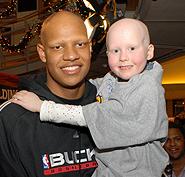
What a wonderful attitude! Alopecia Universalis (AU) treatment can be complex and sometimes not even possible. If you visited one of our California Hair Restoration Offices and met some of my patients, you’d be dumbfounded by how crippled and saddened they feel at the loss of their hair.
A message I always give to my patients is that it is beneficial to look good physically. I say if it’s possible for a person to alter their appearance in a way that’s socially acceptable (e.g., getting a swastika tatoo on one’s face wouldn’t be), then do it. But if it’s not something that can be changed, know that you were made that way for a reason, and our differences are what make us unique and human.
Tags: alopecia universalis, Alopeica Areata, AU, bald is beautiful
Posted in California hair transplant, women hair loss | No Comments »
Saturday, October 17th, 2009
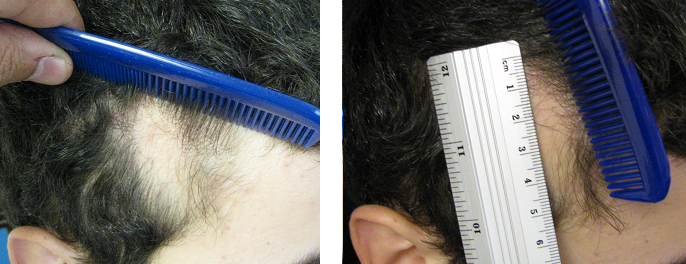 Temporal triangular alopecia also known as TTA is a congenital hair loss condition in which the patient had a limited balding area on his temples. The condition is assumed to be congenital and is generally obvious since birth. The balding spot may contain normal numbers of hairs, but they are all vellus and generally not visible. Temporal triangular alopecia also known as TTA is a congenital hair loss condition in which the patient had a limited balding area on his temples. The condition is assumed to be congenital and is generally obvious since birth. The balding spot may contain normal numbers of hairs, but they are all vellus and generally not visible.
Congenital temporal triangular alopecia is considered a nonscarring alopecia and if biopsied should not be mistaken for Cicatricial alopecia. TTA respond well to hair transplantation and there are some studies that patient were treated with hair transplant surgery successfully with adequate coverage.
The condition could be treated by a hair restoration surgery at any age. We at the California offices of US Hair Restoration offer treatments for congenital temporal trangular alopecia.
Tags: congenital triangular alopecia, hair loss, hair loss treatment, hair transplant surgery, patchy hair loss, temporal triangular alopecia, TTA
Posted in California hair transplant, hair transplant | No Comments »
Wednesday, October 7th, 2009
 In a recent email sent to our office from a recent patient, he writes in regards to his scalp evaluation and regarding Propecia (Finasteride). He asks, “Could finasteride worsen the hairline due to the rise of testosterone?” and, “if there’s any safe and minor treatments to slow the progress of maturation or reverse it that you would recommend at this stage?” In a recent email sent to our office from a recent patient, he writes in regards to his scalp evaluation and regarding Propecia (Finasteride). He asks, “Could finasteride worsen the hairline due to the rise of testosterone?” and, “if there’s any safe and minor treatments to slow the progress of maturation or reverse it that you would recommend at this stage?”
Early stages of male patterned hair loss may not always be obvious enough to be differentiated from normal levels of miniaturized hair during scalp microscopic evaluation. Propecia (finasteride) is still the most recommended hair loss medication to prevent additional balding. Some patients have even been prescribed Propecia without proper diagnosis or documentation of their hair loss condition making it difficult to tell if they have gotten better since they started or worsened.
Propecia (finasteride) is designed to block DHT (Dihydrotestosterone) which is the main cause of male patterned hair loss. With this in mind, finasteride cannot deteriorate your hair loss or cause changes in the hairline. Maturation of the hairline is normal in all men and should not be confused with balding. We also do not have any further recommendation on medications that can stop the maturation of the hairline.
Tags: beverly hills, Beverly Hills Hair Restoration, finasteride, hair line, hair loss, hair transplant surgery, hairline maturation, hairline recession, male patterned hairloss, men hair loss, miniaturization, testosterone, young patients with hair loss
Posted in Bakersfield hair transplant, California hair transplant, hair transplant, men hair restoration, Newport Beach hair transplant, Orange County hair transplant | No Comments »
|
|










